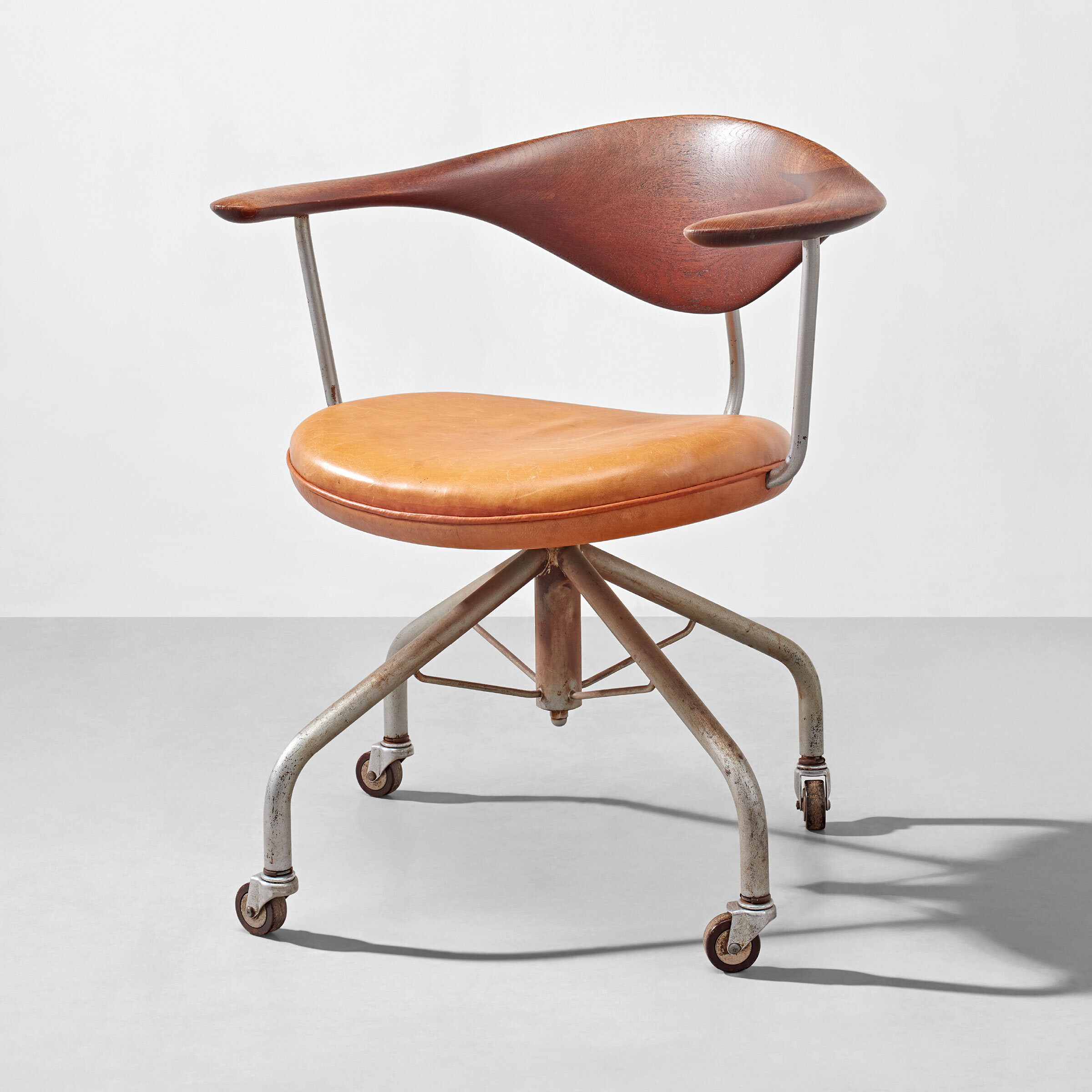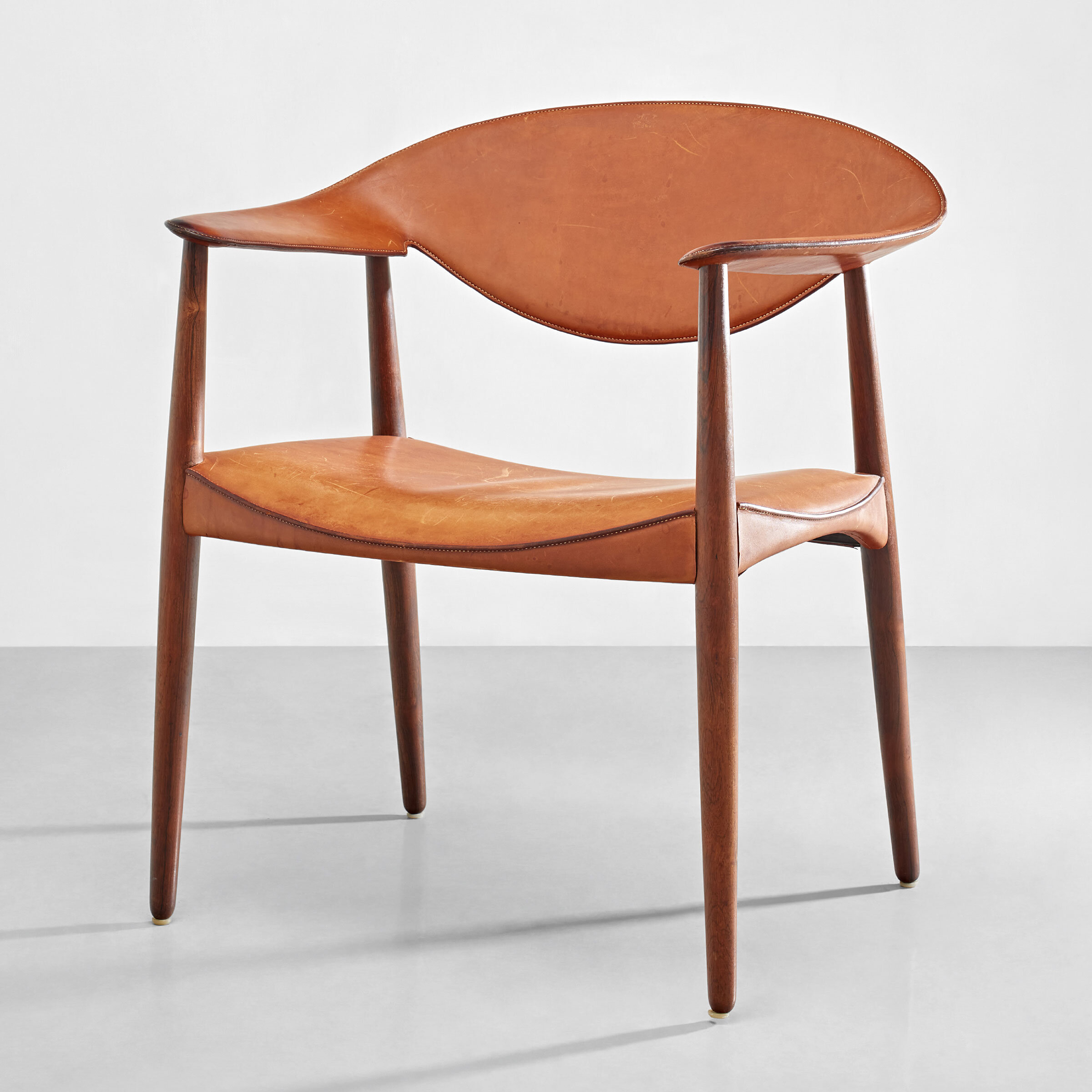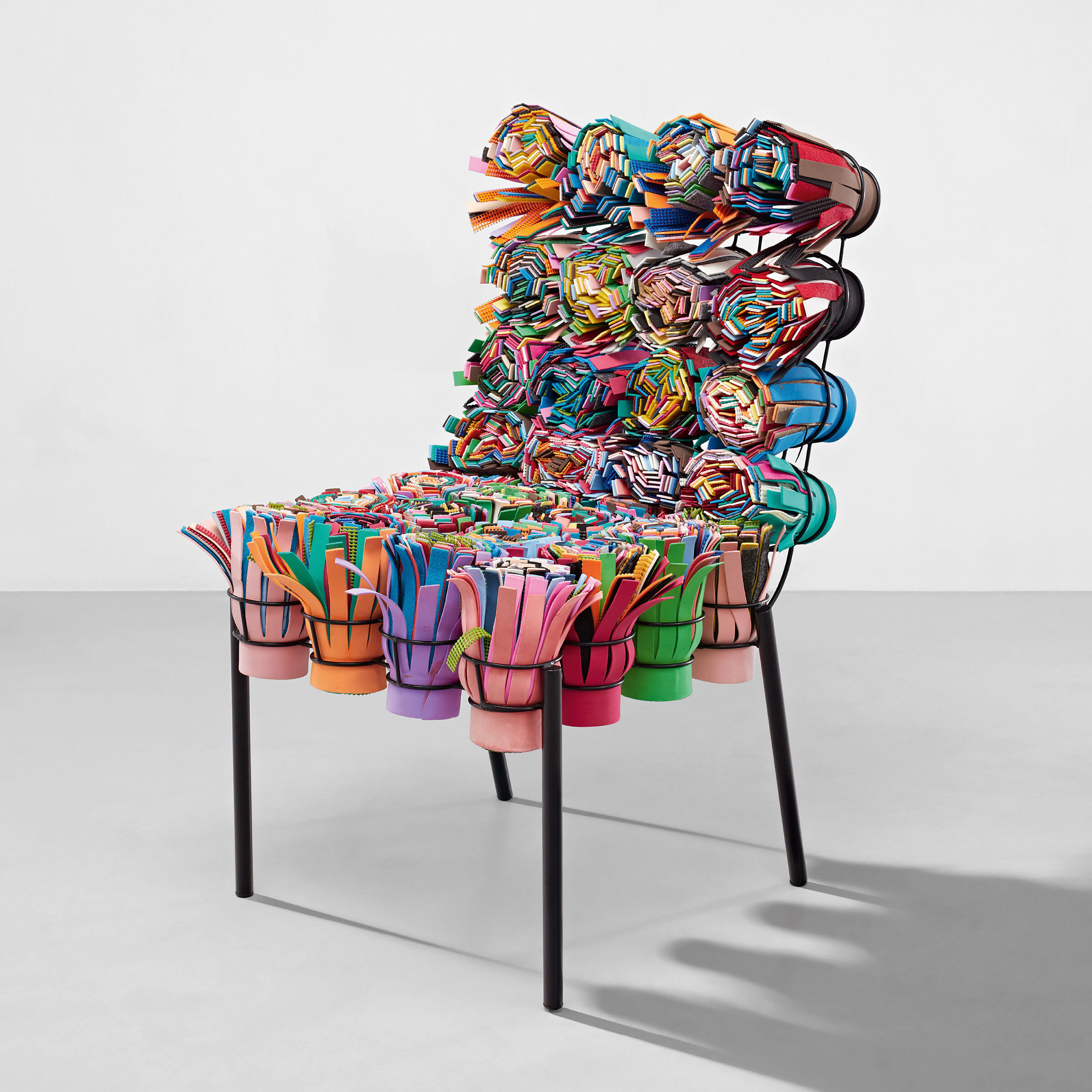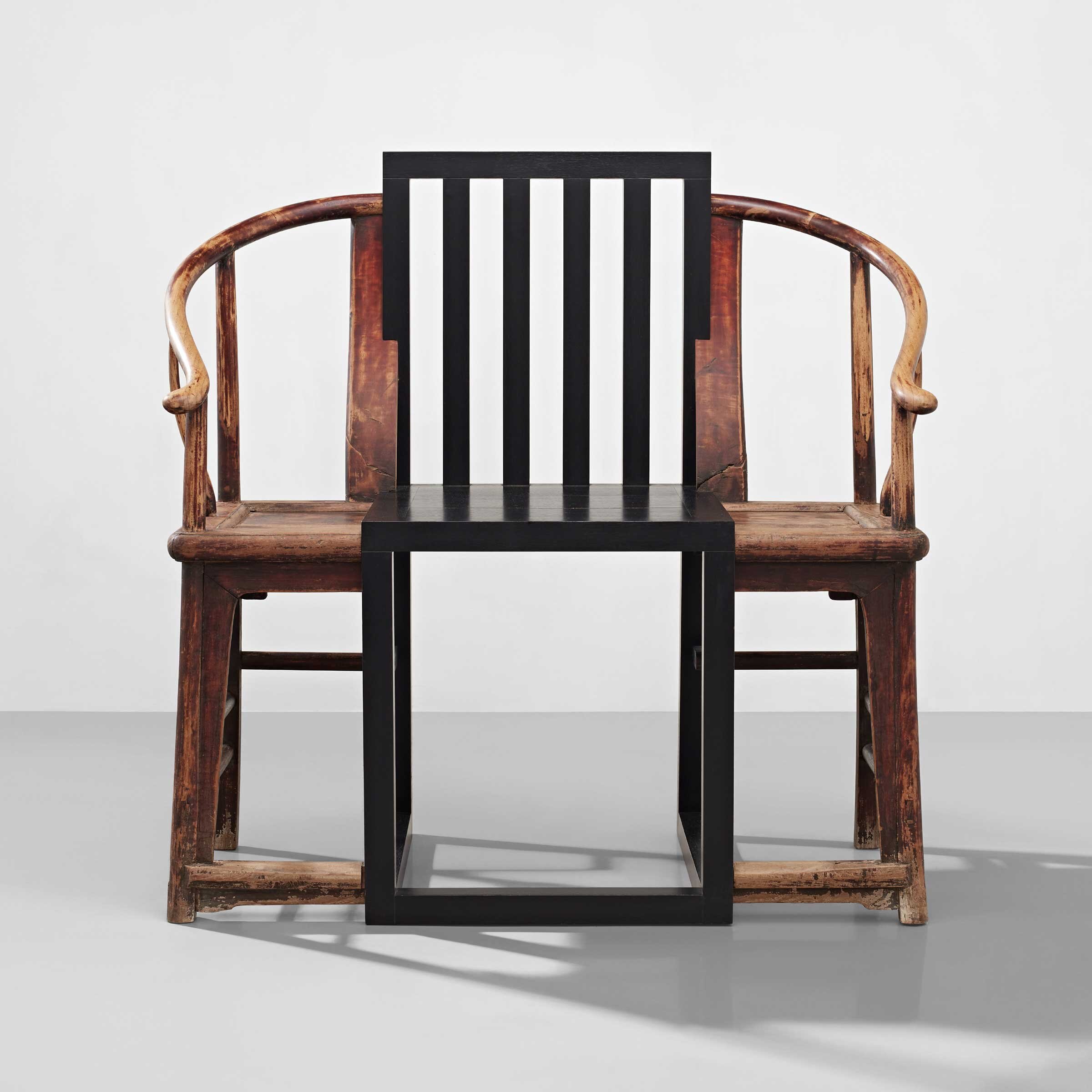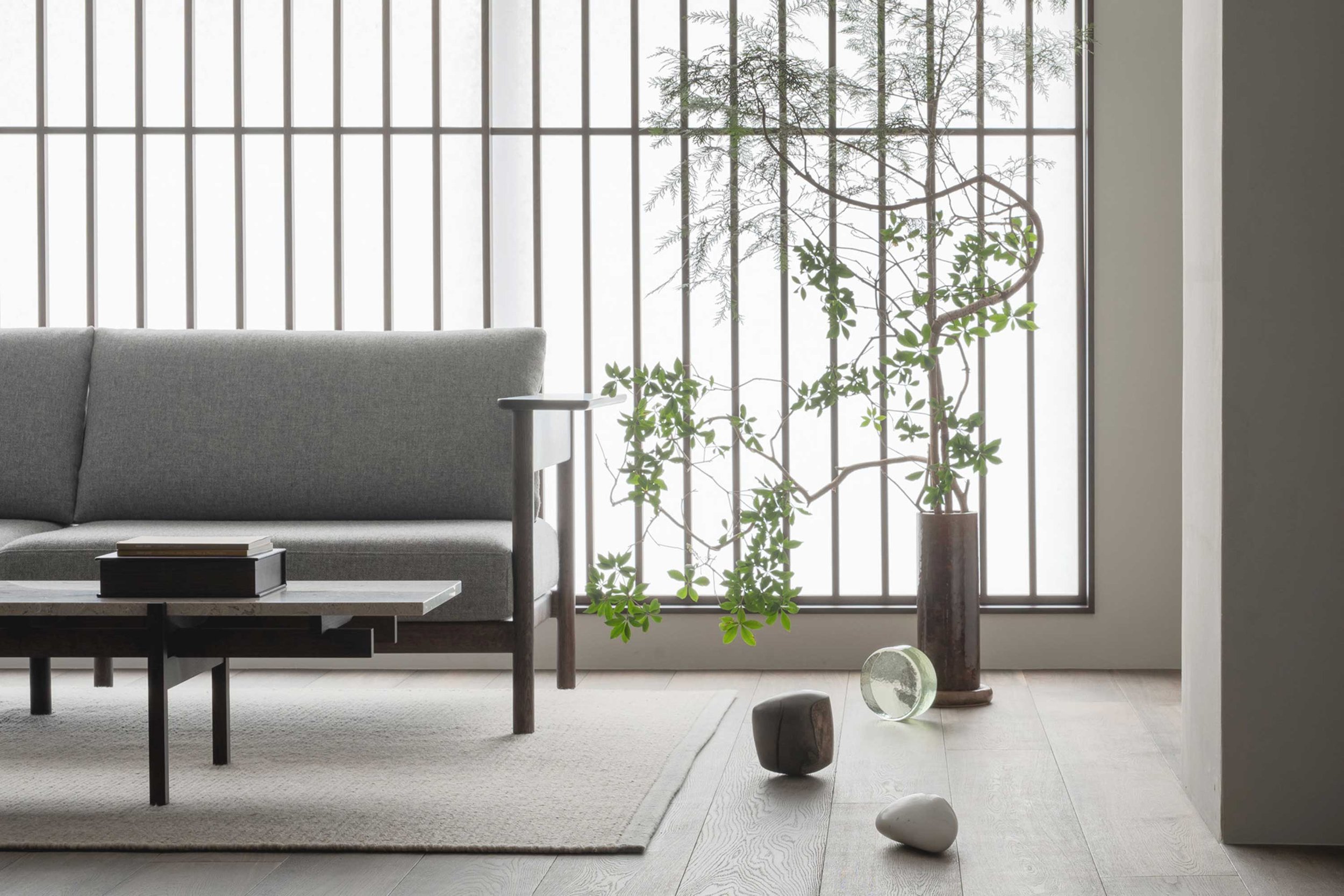Eternal Form: A Century of Modern & Contemporary Design

Pieces from Kai-Yin Lo’s extraordinary collection of landmark furniture objects go on sale at Phillips Hong Kong
Noted auction house Phillips is the first in the region to present works in the design category; its latest collection for July auction, Eternal Form – A Century of Modern and Contemporary Design, draws on the stunning collection of Hong Kong collector Kai-Yin Lo.
Lo first made her name as a designer of ceramics, jewellery and accessories. But she is also a noted cultural historian, curator, editor and teacher: in fact, she was the first professor of Cross Culture at Central Saint Martins, and the concept of crossing and combining cultures has always informed her work.
Lo is also a highly respected collector, who amassed a singular collection of antique Chinese furniture dating from the 17th to the 20th century before branching out to collect modern Scandinavian pieces and contemporary design from around the world — a practice that foreshadowed many academic and market trends. Her pieces were acquired from galleries in London, Paris and New York as well as in Copenhagen, Helsinki, and Stockholm, making for impressive provenance.
It’s tempting to draw common dichotomies in the collection — East and West, old and new, industrial and handmade — but what’s more interesting is the connections: those between antique Chinese furniture, Scandinavian modernism and contemporary design are both aesthetic and conceptual, and when put into context with one another, provide the opportunity to learn more about the individual objects as well as their broader design context.
Chairs — the focal point of Lo’s collection — are a case in point: those made in Imperial China, particularly in the Ming dynasty, exhibit a number of characteristics that would later pervade furniture design around the world. Furniture embodied harmony, balance and symmetry, its practicality found in both its basic function as well as in its demarcation of areas with discrete purposes within the home and garden. While the aesthetic is most clearly embodied in Hans Wegner’s China chair, others — such as the pieces by Kenzo Tange — offer more subtle references or — in the case of Zhang Zhoujie — provide pointers to the future.
The Campana Brothers and nendo provide playful pieces, the former's Sushi III chair evoking maki rolls in its creation and aspect, the latter's Manga chair taking its cue from the way in which the art form's grids provide kinetic energy and anthropomorphise character and object. More than being functional pieces, these chairs turn into objects of desirability, similarly to antique Chinese furniture. Damien Hirst's Spin chair takes this to the extreme: when Hirst adds paint to a Jasper Morrison chair, the chair becomes a mere vehicle for his artwork.
Lot 150
Hans Wegner, China chair
In 1943, Wegner designed this now-iconic China chair after seeing an illustration of an antique round-back Chinese chair in a book. Deeply interested in this model, he obtained his own version and simplified the form into its clearest and most logical design while utilising premium materials and superb craftsmanship.
Lot 157
Hans Wegner, Swivel Chair
Most early Scandinavian chair designs primarily use wood; however, with functionality a tenet of Scandinavian modernism, Wegner implemented the use of metal to maximise this. The sculptural curves and the use of slim metal supports make the backrest and armrests appear to float, while also providing a striking addition to Wegner's modernist visual vocabulary.
Lot 153
Bender Madsen, Metropolitan Chair
Ejner Larsen and Aksel Bender Madsen’s Metropolitan armchair is probably the most recognisable design by Bender Madsen, and one whose elegant organic form and exceptional craftsmanship make it emblematic of Scandinavian design's golden era. This edition is a rare example in rosewood and leather, part of the line produced by Willy Beck in 1959; featuring a more sculptural, hourglass-shaped seat than earlier iterations, it was the series chosen for MoMA’s critically acclaimed Art of Denmark exhibition.
Lot 148
Alvar Aalto, Armchair 42
Designed for Aalto’s Paimio sanatorium commission, this edition is an early special edition realised in curly birch, one of fewer than 20 thought to have been made due to the difficulty of obtaining birch and complications in production. The flowing, organic lines of the chair, and the use of the distinct wood with Aalto’s trademark bent plywood combine to create not only a seat as comfortable as it is beautiful.
Lot 145
Campana Bros, Sushi III chair
Fernando and Humberto Campana's Sushi III chair is inspired by the process of preparing a sushi roll: the seat and back consist of dozens of pieces of fabric that have been rolled, sewn together into cylinders and then cut laterally. The piece is representative of much of the Campana Brothers’ work and their playful, inventive design approach.
Lot 149
Nendo, Manga chair
The Manga chair is part of a series of 50 inspired by the namesake comics, in which each page contains multiple images arranged in a grid layout. Though flat, these images contain an explosive emotional impact and intellectual complexity; similarly, the chairs represent different iconographical or conceptual elements of manga, displaying an emphasis on line over mass and volume that enables kinetic energy and anthropomorphism of character and object.
Lot 146
Zhang Zhoujie, chair from Triangulation series
Zhang Zhoujie works at the cusp of contemporary design, creating some of the most innovative and forward-thinking designs of the early 21st century. Here, Zhang has created a fractal-derived volume extrapolated from the two-dimensional into an intricately centripetal set of straight lines; interestingly, capturing the designer’s interest in craft and its relationship with design, the chair is constructed by hand.
Lot 144
Shao Fan, King chair
Shao Fan’s King chair consciously embodies the two-way cultural exchange represented across the collection, its functionality combined with a fine-art approach. The piece specifically explores the relationship between furniture from the Ming period and contemporary design. Though the chairs are playful and innovative pieces of functional design, the designer’s work also embodies a sculptural and conceptual approach often associated with fine art. The piece is the first chair from a planned edition of 70, though only seven were actually executed.
Lot 151
Damien Hirst, Spin chair
The chair fits within Hirst’s larger body of Spin pieces, in which the artist spins the canvas — here, a chair designed by Jasper Morrison — and drops paint onto it, resulting in exciting vortexes of colour. The piece is therefore unique, and its bright colours and splatters of paint reference formal elements of the artist’s larger body of work, while the use of an existing, industrially produced chair references his tendency to work with found objects.
Lot 152
Kenzō Tange, four chairs
One of the most significant architects working in the 20th century, Tange designed countless iconic buildings, including the arenas for the 1964 Tokyo Olympics. This set of chairs was designed for his Sumi Memorial Hall commission and manufactured in Japan around 1957; like much of his work, the chairs are clearly influenced.by European modernism but incorporate elements of design from his native Japan.
Lo spoke about her collecting journey with design curator and Design Anthology collaborator Aric Chen
Auction: Phillips 20th Century & Contemporary Art & Design Day Sale
Date: 9 July 2020
Preview: 4-7 July 2020
Location: JW Marriott Hong Kong
RSVP at RSVPHK@Phillips.com


